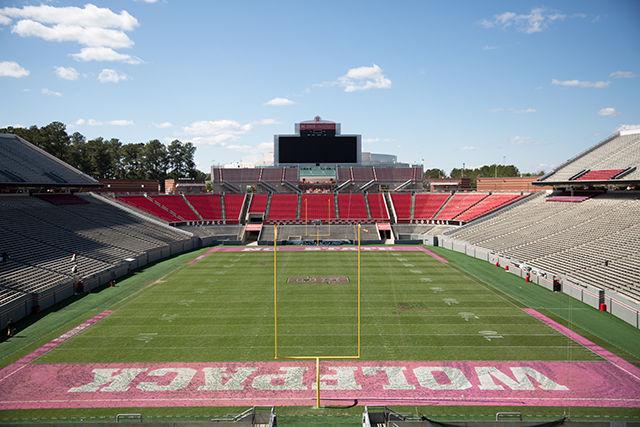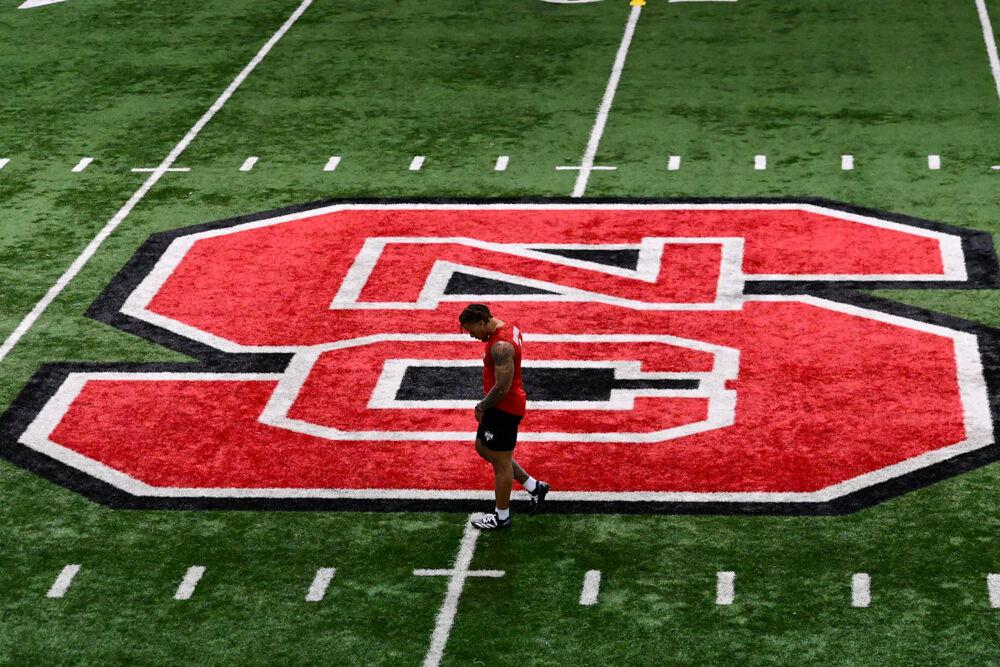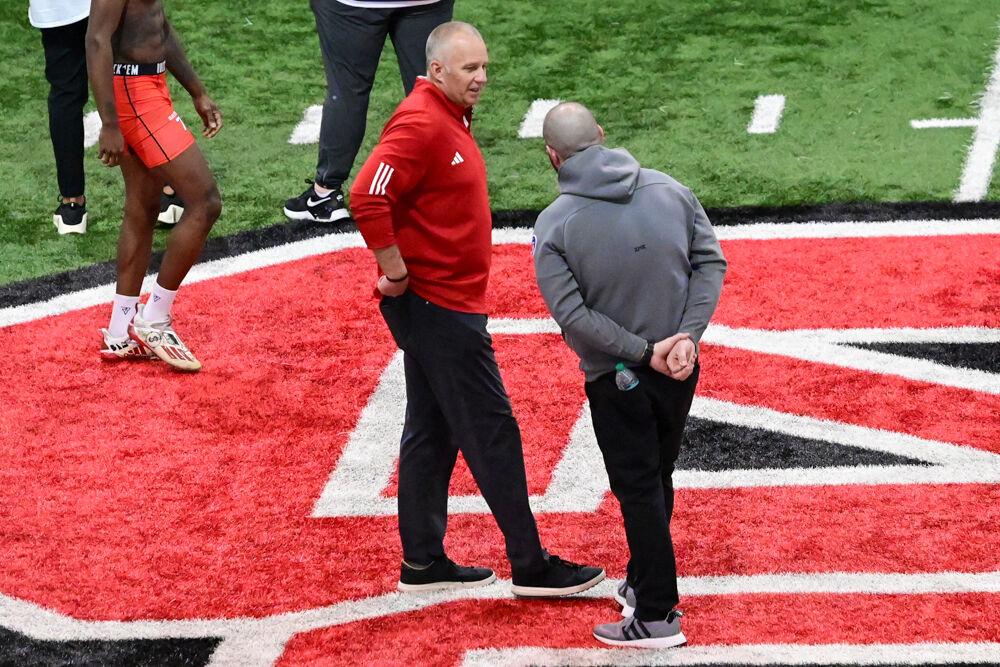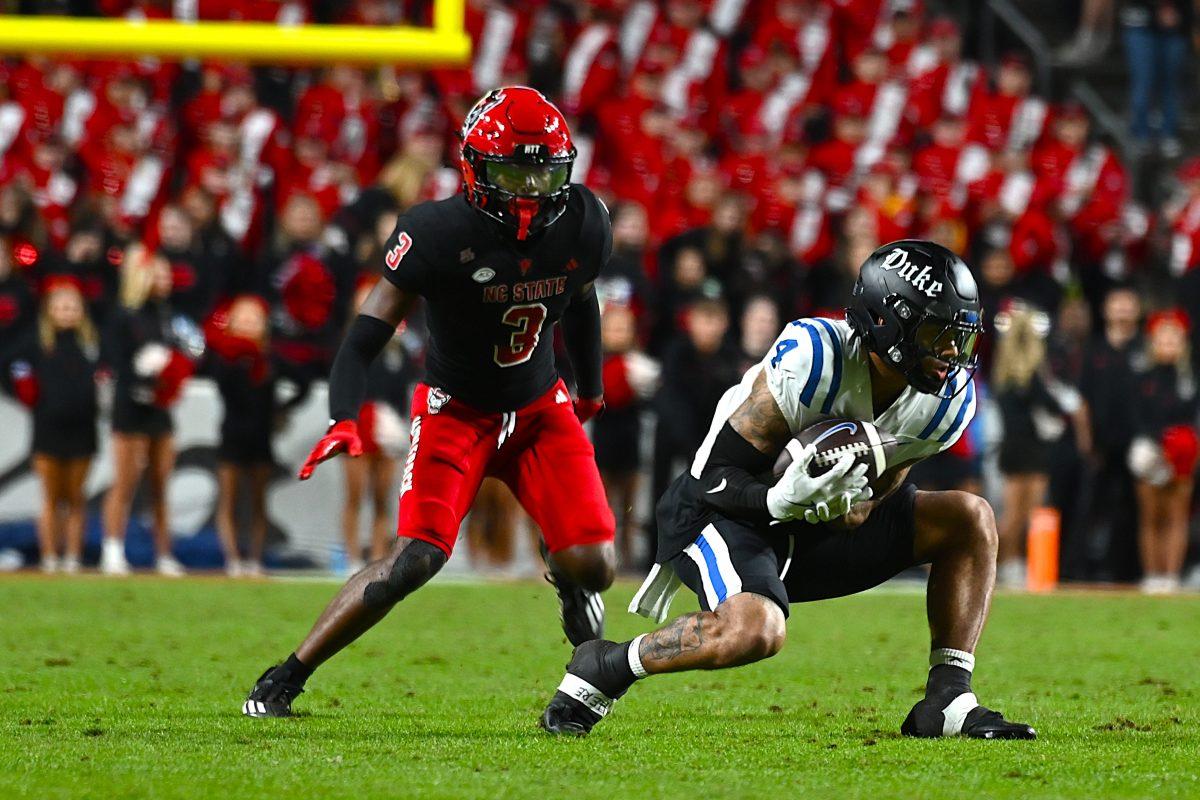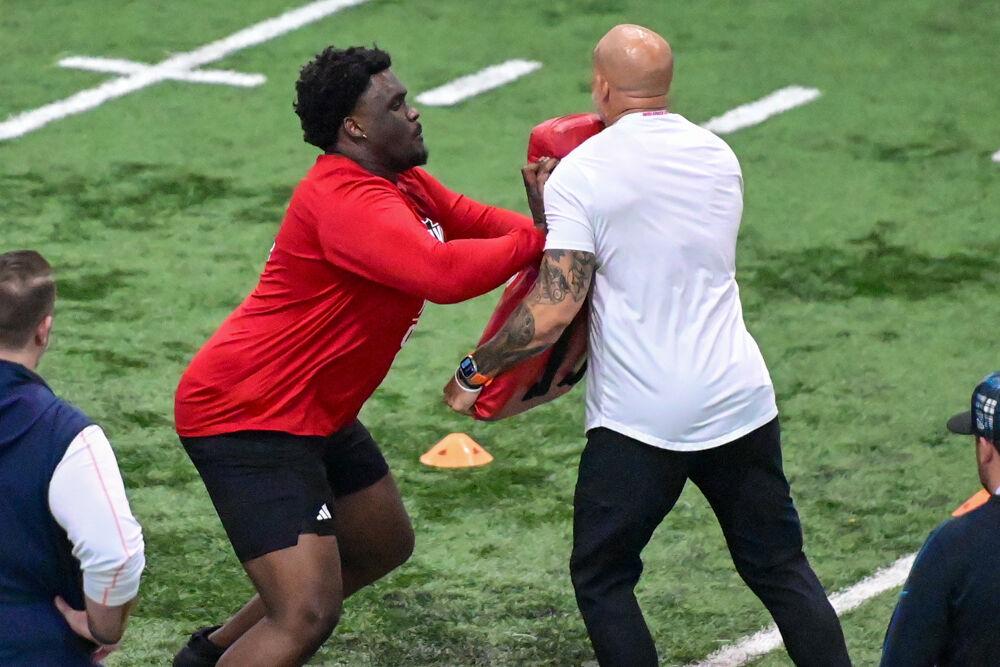This upcoming football season, NC State will mark the 50th year that that the Wolfpack has called Carter-Finley Stadium home. Much has changed in the past half-century, but the landmark has remained a symbol of pride for all in the NC State and Raleigh community.
Carter-Finley, which officially opened on Oct. 8, 1966, has seen the likes of many coaches and players that are now eternally memorialized in NC State football history. One such person, however, stands above the rest.
One man had a dream of a state-of-the-art football stadium for the Wolfpack to call home. University Communications writer, editor and historian Tim Peeler said that the man responsible for initiating the construction of the stadium was a visionary.
“There is no doubt that the man considered the father and the heart and soul of Carter-Finley stadium, is former head football coach Earle Edwards,” Peeler said.
Earle Edwards was at the helm of Wolfpack football from 1954-1970. Edwards was also the final head coach to play in Riddick Stadium, the original wooden and structurally insufficient stadium that once stood where today lies the parking lot between Syme Residence Hall and SAS Hall.
“Edwards actually sacrificed his own stats and records by scheduling many of his games on the road against big-name schools,” Peeler said. “The reasoning behind this was that he was trying to promote NC State football in the hopes of putting the program on the map, and also to gain attention for a new football stadium.”
In 1966, Edwards’ dream became a reality with the dedication of Carter Stadium (“Finley” was not added until 1979).
“No one was happier on that opening game day than Edwards,” Peeler said.
When he died in 1997, his ashes were spread on the field at Carter-Finley, making his home stadium, his final resting place as well. When discussing the design and construction of the stadium, Peeler said that it was a new and exciting concept at the time.
“The entire stadium went up in about 16 months,” Peeler said. “And it was actually revolutionary in that time that a football stadium was built off campus, and in an area that was designed for tailgating and with growth potential in mind.”
With this revolutionary new stadium, the Wolfpack headed into what Peeler defines as “the golden age of NC State Athletics.” This period, which was roughly in the middle of the 1970s, was the most successful period of athletic achievement in NC State’s history. It was during this time that the 1974 men’s basketball team won the national championship, as well as two ACC football titles in six years.
For the first 35 years of its existence, Carter-Finley’s south end zone was open-ended, with a large grassy hill directly behind. It was on this hill that many NC State students would watch the games. In 2001, it was decided that the hill would be mowed down in order to be replaced by modern bleachers that enclosed the stadium. With the addition of the Murphy Center in 2002, the stadium began to take a bowl-like shape. The year 2005 saw the building of the lofty Vaughn Towers. As a result, Carter-Finley looks drastically different than it did 50 years ago.
In the half-century of its existence, Carter-Finley has not solely been a football venue. The stadium has seen the likes of many famous artists, bands and speakers. U2, Paul McCartney, Van Halen, The Rolling Stones and Beyonce have all held concerts there. Preacher Billy Graham also spoke at Carter-Finley in 1973 as a part of his Central Carolina Crusade. For many famous people looking to stop in Raleigh, Carter-Finley is definitely one of the most popular venues.
As this year marks the 50th Anniversary of Carter-Finley stadium, the NC State football team will be donning throwback uniforms and helmets for the Oct. 8 game against Notre Dame. Players will be sporting the red diamond logo on white helmets, a tribute to the 1986 logo introduced by former head coach Dick Sheridan, instead of the typical block ‘S.’ Red tops and white pants will complete the look.
Carter-Finley is one of the strongest symbols of Wolfpack pride. As we celebrate its birthday this season, let us feel proud to call such an amazing and historic stadium our home. Let us also remember the great people that have made the venue what it means to us today, and let us look to the future for more individuals to carve their names into Carter-Finley’s rich history.


